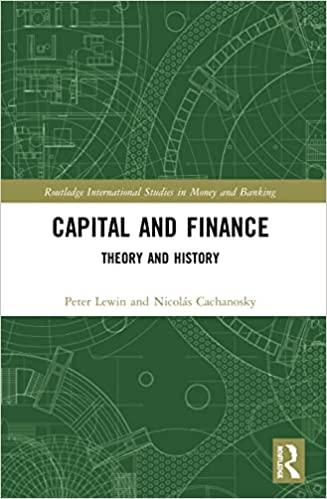Answered step by step
Verified Expert Solution
Question
1 Approved Answer
Future Value: If the company deposits $2 million in a bank account that pays 6% interest annually, how much will be in the account after
- Future Value: If the company deposits $2 million in a bank account that pays 6% interest annually, how much will be in the account after 5 years?
- Present Value: What is the present value of a security that will pay $29,000 in 20 years if securities of equal risk pay 5% annually?
- Required Interest Rates: The company owner has said she will retire in 19 years. She currently has $350,000 saved and thinks she will need $800,000 at retirement. What annual interest rate must she earn to reach that goal, assuming she does not save any additional funds?
- Future Value of an Annuity: Find the future values of these ordinary annuities. Compounding occurs once a year.
- $500 per year for 8 years at 14%
- $250 per year for 4 years at 7%
- $700 per year for 4 years at 0%
- Present Value of an Annuity: Find the present values of these ordinary annuities. Discounting occurs once a year.
- $600 per year for 12 years at 8%
- $300 per year for 6 years at 4%
- $500 per year for 6 years at 0%
- Bond Valuation: The company has two bonds in their investment portfolio, Bond C and Bond Z. Each bond matures in 4 years, has a face value of $1,000, and has a yield to maturity of 8.2%. Bond C pays an 11.5% annual coupon, while Bond Z is a zero-coupon bond. Assuming that the yield to maturity of each bond remains at 8.2% over the next 4 years, calculate the price of the bonds at each of the following years to maturity. Explain any observed differences from the pricing calculations of the two bonds.
| Years to Maturity | Price of Bond C | Price of Bond Z |
| 4 | ||
| 3 | ||
| 2 | ||
| 1 | ||
| 0 |
- Yield to Maturity and Yield to Call: The owner is interested in investing some retained earnings in corporate bonds. She is considering the following:
- Bond A has a 7% annual coupon, matures in 12 years, and has a $1,000 face value.
- Bond B has a 9% annual coupon, matures in 12 years, and has a $1,000 face value.
- Bond C has an 11% annual coupon, matures in 12 years, and has a $1,000 face value.
Each bond has a yield to maturity of 9%.
a. Before calculating the prices of the bonds, identify whether each bond is trading at a premium, at a discount, or at par. b. Calculate the price of each of the three bonds. c. Calculate the current yield for each of the three bonds.
Step by Step Solution
There are 3 Steps involved in it
Step: 1

Get Instant Access to Expert-Tailored Solutions
See step-by-step solutions with expert insights and AI powered tools for academic success
Step: 2

Step: 3

Ace Your Homework with AI
Get the answers you need in no time with our AI-driven, step-by-step assistance
Get Started


